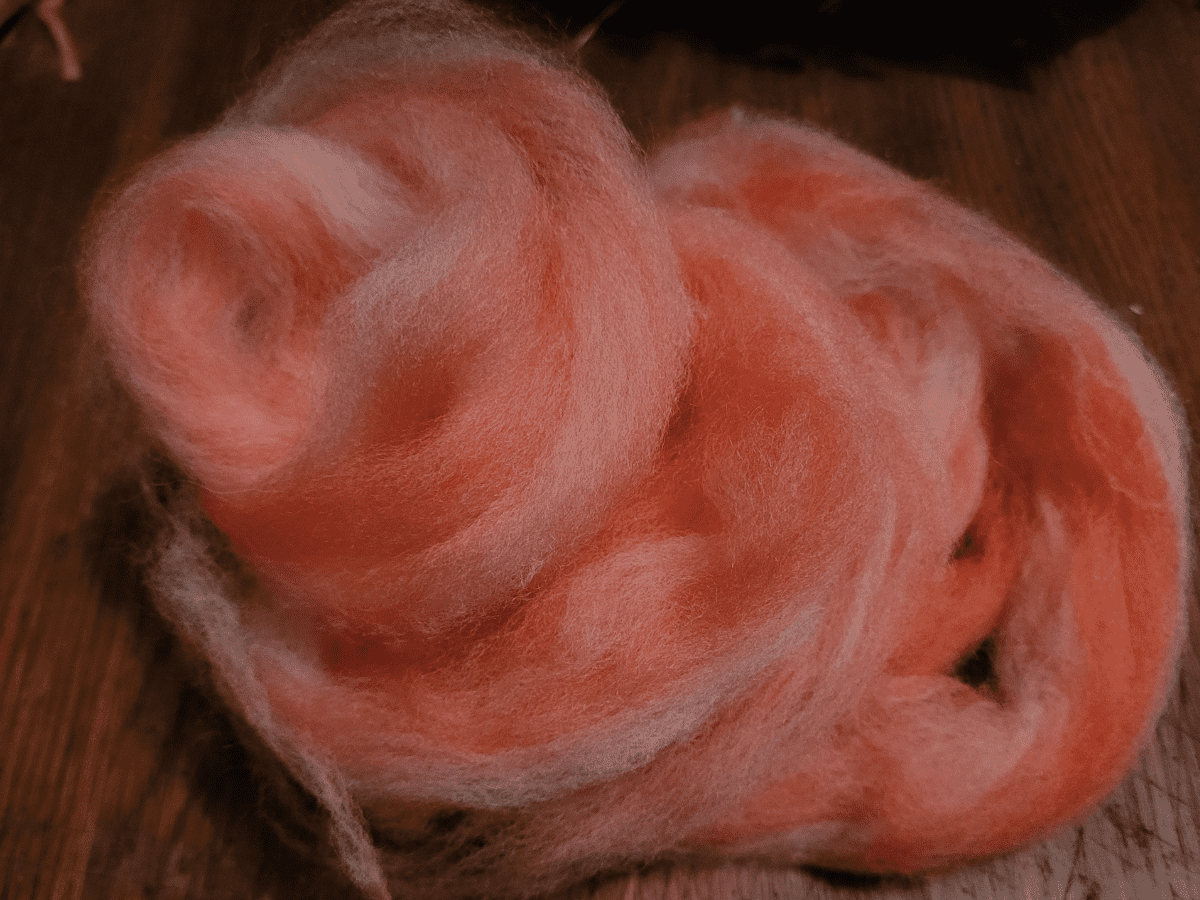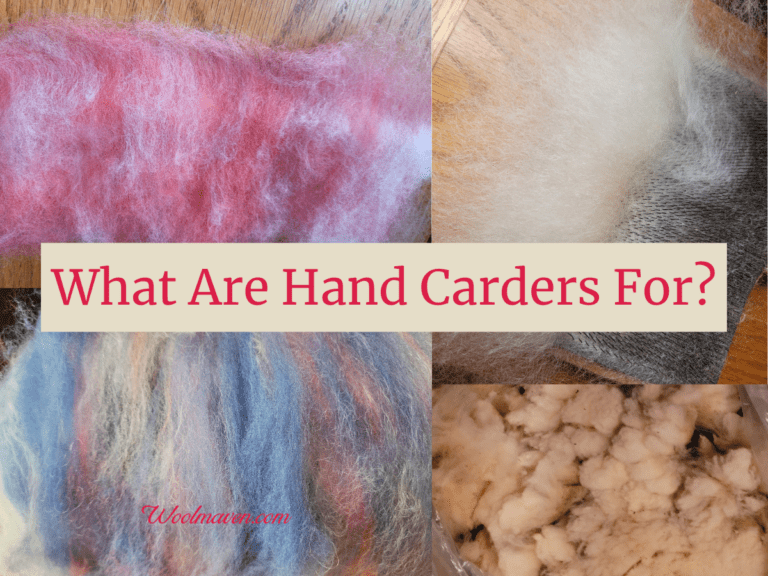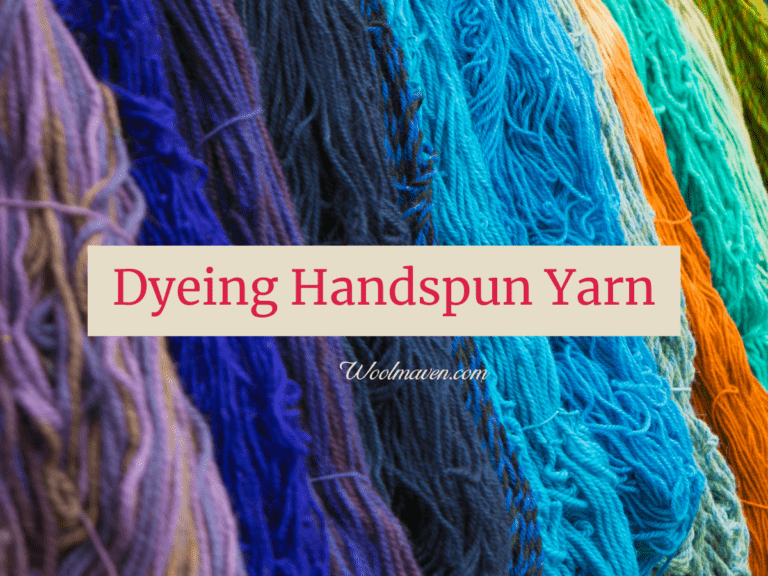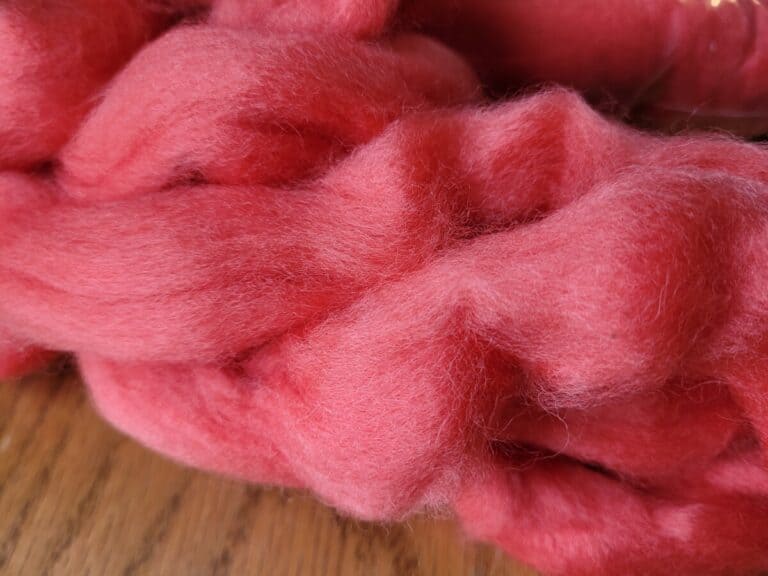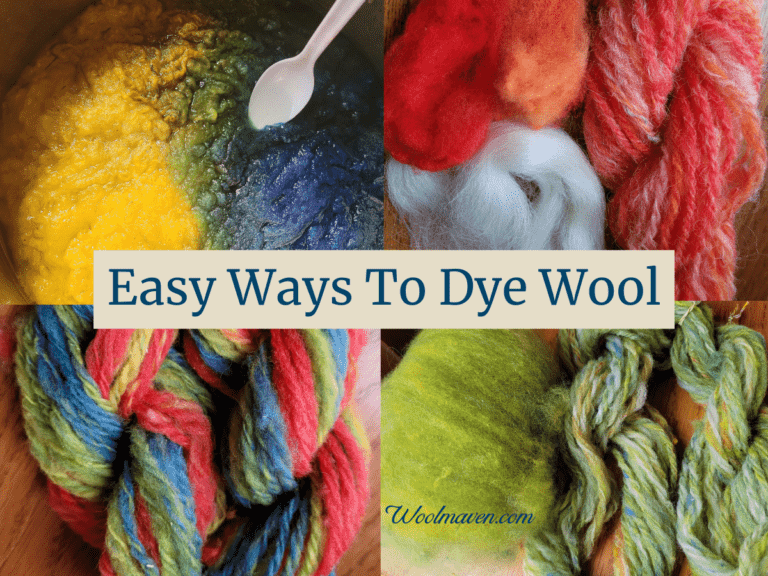How To Make Roving With Hand Carders
Making your own wool roving! Once you know how to do this, the world of options is wide open for you and your handspinning!
To make wool roving, start with clean, washed wool that has been well carded and is still on the hand cards. Gently take the wool off of the card using a diz and a wide zig zag motion. The wool that comes off of the cards through the diz is roving.
How To Make Roving From Your Own Wool goes over both carding and combing fiber for your spinning projects!
New to spinning and want some help? Try my Beginning Spinner Course, it has simple, step by step instructions and is designed to take you from beginner to confident spinner!
Prepare wool for hand carding
Carding is the wool preparation for shorter to medium staple length wools.
If you have a longer staple length wool, you probably should be combing instead of carding. If the staple length of your wool is under 5 inches or so, you are good to go!
The first thing you need to do when you want to make roving with hand cards is to prepare the wool for carding.
This usually means starting with washed wool that is fairly free of VM (vegetable matter) or other contaminants.
You can, of course, card raw wool, but most folks don’t, (read using raw wool below).
Some of the little bits that are in the wool will be carded out, but not all. It’s best if you can start with as clean, as in VM free, wool as you can.
The more pre carding work you do, the less work you will do later!
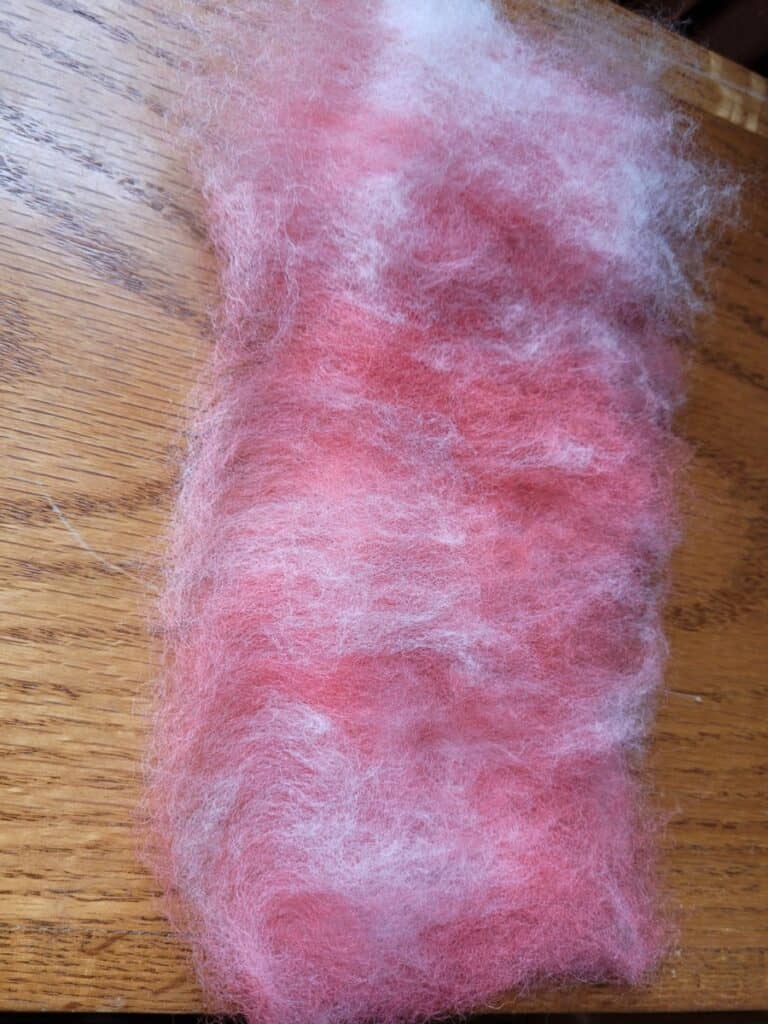
This post contains affiliate links, which means I receive commissions if you choose to purchase through links I provide (at no extra cost to you).
Card your wool with hand carders
Most folks will start their carding journey with a set of hand cards.
The hand cards that I use are Clemes & Clemes Curved Back Wool Cards. I’ve had them for almost 20 years and use them for all of my hand carding.
To start, separate off a section of your fleece and pull the wool to be carded off of it, rather than pulling off of the whole fleece, it’s easier to work with a smaller amount of wool.
Take small sections of your wool, preferably locks of wool, not big blobs and gently press them onto the lower third of the card in one thin layer, so that some of the wool is hanging off of the bottom edge.
It won’t take much for them to grab on, but if a lock falls off just stick it back on the card, you’ll get a feel for it soon.
Take the top card and use it to grab the edge of the fiber on the bottom card using a rolling motion. Do not grate the cards across one another!
It looks more like the top card is galloping across the bottom card, not scraping! If you have it right, you’ll end up transferring all of the wool to the top card.
Make sure you fully pull the top card away from the fiber on the bottom card otherwise you’ll bend over the ends of the fibers rather than straightening them out.
This is one of those times where less is better. Use small amounts of wool and take your time.
New to spinning and want some help? Try my Beginning Spinner Course, it has simple, step by step instructions and is designed to take you from beginner to confident spinner!
Keep carding this portion of wool until the fibers are all separated out of each lock of wool. This may take several passes with the cards.
How many passes depends upon how much wool you put on and how aggressively you are carding.
Any locks that are not well carded will not be separated out later, the time to get them separated is now.
If you have ever tried to spin off of a rolag or batt that you carded and part of the fibers were still sticking together in the rolag rather than easily drafting out to spin, this is what happened, not enough carding.
Once the wool you have on the cards is well separated and straightened out, you can add another layer and repeat. Keep carding and adding until you feel the cards are full.
The more wool you have on the cards the longer your roving can be.
Cost To Spin Your Own Wool goes over the math of spinning versus buying wool yarns.
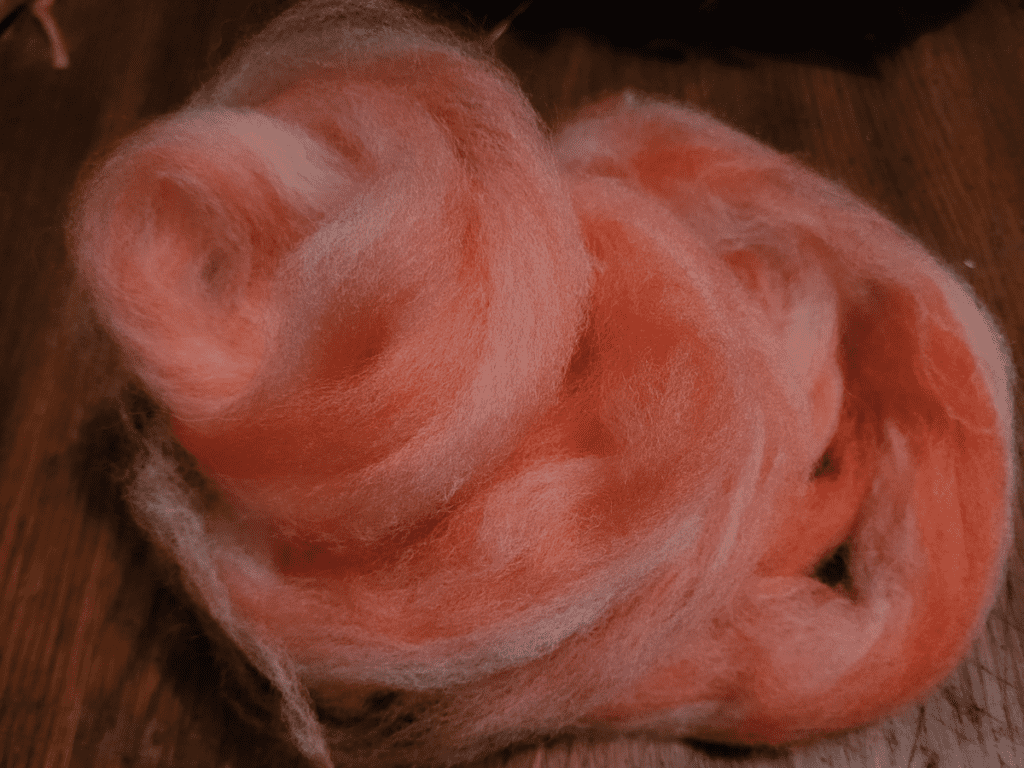
Make roving from carded wool
To make roving from your well carded wool, sit down, taking the full card and place it upright between your knees. This is to anchor the card as you pull against it.
Now make a little point in the wool ends by grabbing a bit of wool at one of the edges and giving it a twist.
Take the twist of wool and put it through your diz so the concave part of the diz it towards the wool.
Gently start pulling wool through the diz. You will need to pull a bit, then move the diz down and pull again.
As you are pulling the wool, slowly work your way across the top of the card from side to side.
You will be making a zig zag pattern across the card to get all of the wool into the roving.
There really is no wrong way to get the wool off of the card, but if you are shooting for a longer roving, go for the zig zag pattern
Go slow and take your time. If you end up pulling too much and breaking the roving, just restart.
With a bit of practice, you’ll get the feel for how much fiber to pull at a time.
It’s that easy! Now you have your own roving and more importantly the ability to make whatever roving you want, next time!
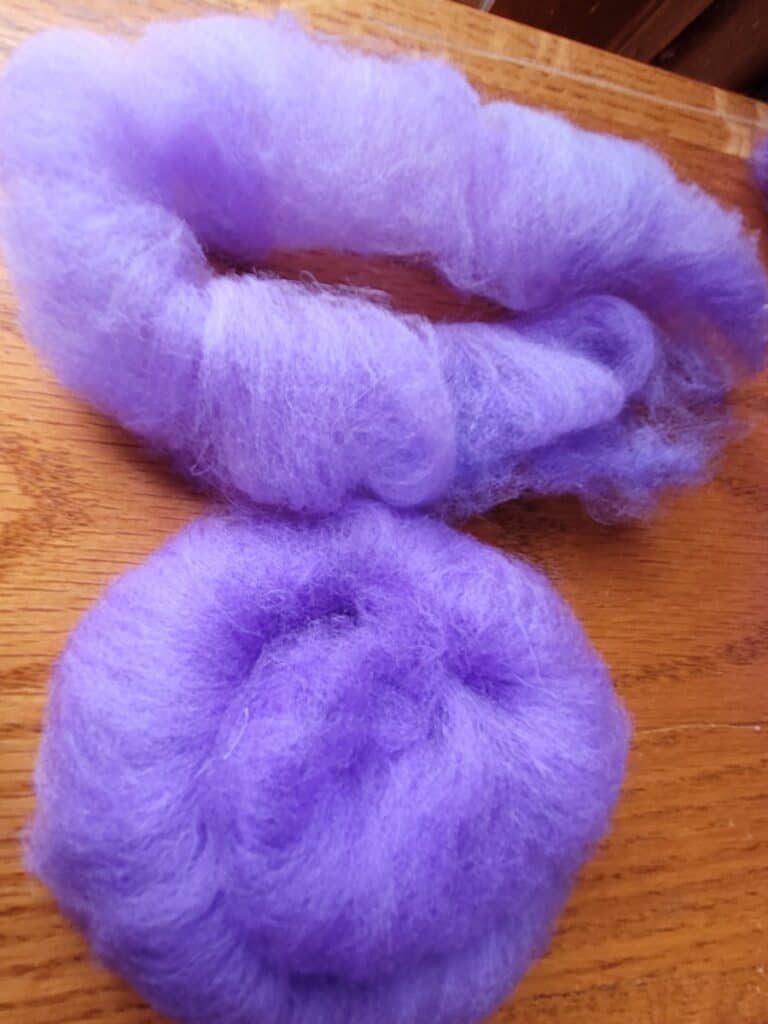
Make rolags from carded wool
Your other option once the wool is carded is to make rolags.
You can do this by taking the carded batt off of the hand carders and just rolling it up, the real experts can make rolags using the hand cards only!
Or you can make a fauxlag (fake rolag) using dowels (or knitting needles) to pinch the edge of the wool and roll around the dowel.
This will make a nice cylinder of fiber for you. To smooth out the wispy edges, lightly roll the rolag around on your lap.
New to spinning and want some help? Try my Beginning Spinner Course, it has simple, step by step instructions and is designed to take you from beginner to confident spinner!
Use raw wool to make roving
As mentioned above, most folks are using washed wool for their carding, but you don’t have to.
If you want to use raw wool, you should know that the grease in the wool will be on your cards, basically getting raw wool grease on any washed wool you would card with these cards later.
The easy answer here is to have a second set of cards, one for washed and one for unwashed or to not worry about it!
While the grease transfer is the potential issue with the carders, themselves, the issue of using raw wool can be that the fleece will be sticky or hard to card with all that grease still in the wool.
I was just working with one of the fleeces from our sheep (we just have a commercial flock and I pick the fleeces that interest me at shearing) and it was weirdly greasy.
I say weirdly because I like to work with our wool raw, so washing fleeces is unusual for me, but this fleece was so greasy it was hard to work with. I rarely wash wool, sometimes suint soak, but rarely wash.
I washed a section of wool and it has made a world of difference to me, it’s pretty easy to work with now, it’s easy to card and nice to spin and knit with. Washing was the key to this particular fleece.
The reason I tell you this is because I never go straight to washing a fleece, I always try raw first, but it didn’t work with this fleece, so I can either move on to anther fleece or try a different approach.
Classic Carder has a nice video and short article on Preparing Fleece for spinning, which focuses on spinning soaked but not scoured fleece.
New to spinning and want some help? Try my Beginning Spinner Course, it has simple, step by step instructions and is designed to take you from beginner to confident spinner!

